Dharmendra Pradhan’s second innings priorities
Union education minister Dharmendra Pradhan has begun his second innings in Shastri Bhavan, Delhi, at an inflection point in national development when a broad consensus has emerged that top priority has to be accorded to real education and skilling of the world’s largest population of children and youth writes Dilip Thakore
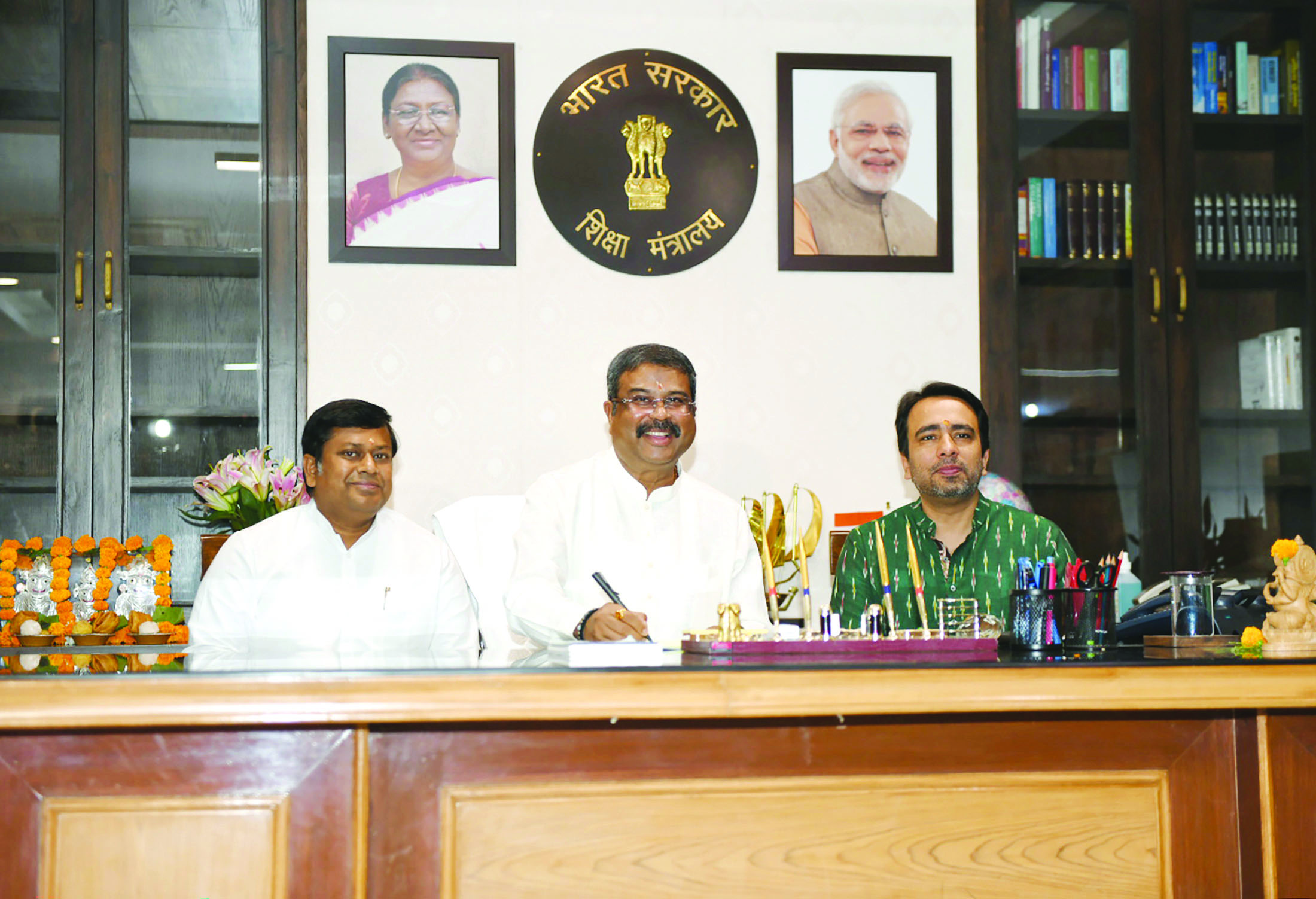
Education minister Dharmendra Pradhan (centre) with deputies Jayant Chaudhary (right) and Sukanta Majumdar after re-induction
The re-appointment of Dharmendra Pradhan who led the ruling BJP’s legislative election 2024 campaign in the state of Odisha (pop.48 million) and famously ended the uninterrupted 24-year rule of the BJD (Biju Janata Dal) and Cambridge (UK)-educated Chief Minister Naveen Patnaik in the eastern seaboard state, as Union Minister for Education doesn’t come as a surprise.
An anthropology postgrad of Utkal University and ABVP activist student leader in his younger days, Pradhan is described as “the longest serving Union minister of petroleum and natural gas in the history of independent India” (2014-19) in his Wiki profile, and is widely credited for master-minding the BJP/NDA 2.0 government’s Ujjwala scheme under which 8 million LPG (liquid petroleum gas cylinders) for home cooking were distributed to women in targeted BPL (below poverty line) households. This initiative reportedly played a significant role in the BJP/NDA being returned to power in General Election 2019.
The very next year after the disastrous incumbency of Dr. Ramesh Pokhriyal — a failed Hindi language pulp fiction novelist — and immediately after the new National Education Policy (NEP) 2020 based on the Dr. K. Kasturirangan Commiteee Report that recommended radical restructuring of Indian education from pre-school to universities was approved by the Union Cabinet in July, Pradhan was promoted to the office of Union minister for education, skill development and entrepreneurship.
Welcoming Pradhan’s appointment as education minister in a detailed cover story (September 2020), your editor noted that he was confronted with the challenge of scaling two mountain peaks simultaneously — repairing huge damage suffered by the education system during 60 weeks of Covid pandemic lockdown, and implementing NEP 2020. “Pradhan’s promotion to the Union education ministry is likely to prove an arduous mission for this relatively young (52) and energetic minister who earned plaudits in his capacity as junior minister of entrepreneurship and skills development (2017-2019). For the simple reason that human capital development, and particularly modernisation of India’s moribund education system, has never been a priority of the BJP and especially of the Rashtriya Swayamsevak Sangh (RSS), the shadowy ideological and cultural mentor organisation of the party,” we wrote four years ago (see see https://www.educationworld.in/can-this-man-revive-indias-shattered-education-system/).
Nevertheless even if the issue of whether India’s children, especially the 52 percent in the country’s 1.1 million government schools, have recovered the severe learning loss of the Covid pandemic is shrouded in mystery — a 2023 ASER (Annual Status of Education Report) of the highly-respected independent Pratham Education Foundation which field tested 34,375 teens in the 14-18 age group, reveals that 25 percent cannot read a class II level textbook fluently in their regional language and more than half struggle with division (3-digit by 1-digit) problems — there is a general consensus that under Pradhan’s leadership the ministry has successfuly fast-tracked implementation of several important recommendations of the revolutionary NEP 2020.
Among them: incorporation of ECCE (early childhood care and education) into the formal school system — a longstanding EducationWorld demand — under the new 5+3+3+4 school education system to replace the earlier 10+2 system; permitting foreign schools and universities to establish campuses in India; introducing the FYUP (four year undergrad programme); introducing the Common University Entrance Test (CUET) for admission into 56 Central government universities; NEET (National Eligibility-cum-Entrance Test) for medical education and also establishing an ABC (Academic Bank of Credits) to enable students to exit and re-enter higher education institutions at their convenience.
Respected monitors and practitioners of Indian education are impressed by the speed with which Pradhan has moved to implement several NEP recommendations, especially in early childhood and school education. “The FLN (foundational learning and numeracy) road map and NIPUN (National Initiative for Proficiency in Reading with Understanding and Numeracy) Bharat programme rolled out by the Union education ministry for youngest children, are excellent documents. They detail every element of what should be taught to children in every age group, and how and why it should be taught. But the problem as usual is with implementation. Except in a few states such as Assam and Odisha, very few government anganwadis (1.4 million essentially nutritional centres established since 1976 countrywide for lactating mothers and infants which also provide ECCE — Editor) are implementing these excellent initiatives. Neither surprisingly are the great majority of private preschools. Moreover, government and private publishers are not printing and publishing aligned textbooks. These lacunae have to be set right and a strong programme to cluster train preschool teachers to implement the excellent FLN and NIPUN curriculums has to be urgently initiated,” says Dr. Swati Popat Vats, founder-director of the Early Childhood Association (ECA, estb. 2010) which has a membership of 40,000 private pre-primaries. Dr. Popat Vats is also President of the Podar Jumbo Kids network of 490 preschools countrywide with an aggregate enrolment of 45,000 youngest children, where these initiatives are being implemented rigorously.
However within two weeks of his being re-appointed as education minister in the Modi 3.0 government, Pradhan has become neck deep embroiled in the NEET-UG (National Eligibility-cum-Entrance Test-Undergrad) scandal which has endangered the future of 2.4 million school-leavers who wrote the exam, of whom the top 56,000 will qualify for admission into 389 government medical colleges (out of a total 706 countrywide) which provide undergraduate (MBBS) education at throwaway prices. After initially denying it, the education ministry has now confessed that question papers of the three-hour exam written in 4,750 centres countrywide were prematurely leaked in Patna and several other centres across the country. Moreover 1,563 students were awarded arbitrary ‘grace marks’ on various grounds enabling several of them to score the maximum 720 or thereabouts.
This issue of malpractice within the National Testing Agency (NTA, estb. 2017), a subsidiary of the Union education ministry established as “a premier, specialist, autonomous and self-sustained testing organization to conduct entrance examinations for admission/fellowship in higher educational institutions,” has cast a cloud over Pradhan’s capability and credibility to implement the root-and-branch reforms proposed by NEP 2020. This is not helped by the minister’s adamant refusal to ‘award’ any interviews to the media, except to neophyte mainstream media journalists who are provided anodyne answers to superficial questions.
Specifically, although EducationWorld has published three lead stories featuring him on the cover, he has stubbornly refused to respond to important questions demanding accountability for progress of policy initiatives and directives emanating from Shastri Bhavan, Delhi. This despite EducationWorld (estb.1999) having established a transnational reputation as Asia’s #1 education news magazine and as a sui generis human development journalism enterprise. Even for this feature, apart from his office acknowledging receipt of a printed questionnaire, neither he, his PA (personal assistant) or Tullika described as OSD (officer on special duty) in the minister’s office declined to respond to pressing requests for a response to an innocuous questionnaire soliciting information relating to the education ministry’s plans during the minister’s second innings. (see box pg. 50)
In the circumstances, given this insolence of office, Pradhan’s bleats about accepting “moral responsibility” for the NEET-UG exam paper leak are unlikely to generate much sympathy. In the first session of the new Parliament, there were strident calls for his resignation from a reinforced and reinvigorated opposition. Particularly since in the aftermath of the NEET-UG debacle, NEET-PG and CSIR/UGC-NET exams have been cancelled for “logistical reasons”, indicating erosion of confidence in NTA and institutional meltdown. In the circumstances the possibility of Pradhan having to return to the pavilion before opening his second innings account can’t be ruled out.
Meanwhile if four years after it was officially approved, NEP 2020 implementation is moving at snail pace, the prime cause is heavy involvement of government in academia that the new policy introduced to translate the recommendations of the nine-member Dr. K. Kasturirangan Committee, mandates. To any dispassionate analyst, it is — or should be — abundantly clear that the dismal condition of Indian education across the spectrum from pe-primary to university is attributable to poor management of government -run universities, colleges and schools and preschools (anganwadis). Yet instead of recommending greater autonomy from government to education institutions, the K’Rangan Committee and its handmaiden NEP 2020 recommends an elaborate government-controlled superstructure to administer and upgrade Indian education.
In a detailed 13-page cover story titled ‘More government, more governance’ (EW, July 2019) which analysed the Kasturirangan Committee’s 484-page NEP draft, your editors highlighted that it recommended numerous committees and commissions. These recommendations are wholly incorporated in NEP 2020 (See EW cover story ‘Visionary Charter: Educracy Shadow’https://www.educationworld.in/national-education-policy-2020-visionary-charter-educracy-shadow/ ).
For instance for improvement and upgradation of the country’s ossified higher education system which recklessly certifies millions of half-baked unemployable youth — none of India’s 1,026 universities is ranked among the global Top 200 — the new policy decrees establishment of a Higher Education Commission of India (HECI) as “an umbrella institution” with four verticals — National Higher Education Regulatory Council (NHERC), a “single point regulator for the higher education sector including teacher education but excluding medical and legal education”; a National Accreditation Council (NAC), “a meta-accrediting body to certify HEIs primarily on basic norms, public self-disclosure, good governance and outcomes”; a Higher Education Grants Council (HEGC) to “carry out funding and financing of higher education based on transparent criteria”; a General Education Council (GEC), established to set learning outcome benchmarks aka “graduate attributes” for all study programmes offered by higher education institutions.
Similarly for school education, NEP 2020 recommends a muti-tier regulatory structure headed by a Department of Education in all states and Union territories for “overall monitoring and policymaking for continual improvement of the public education system”. Operations and policy implementation falls within the purview of the Directorate of School Education, while an independent State School Standards Authority (SSSA) will set standards for basic parameters (safety, security, infrastructure, teacher adequacy, financial probity and sound processes of governance). Moreover, all schools are obliged to make full disclosure of information as per the format prescribed by SSSA on their websites with SSSA empowered to adjudicate “any complaints or grievances” arising out of the information so posted. Academic matters “including academic standards and curricula in every state will be supervised by existing State Councils of Educational Research & Training (SCERT) which will be “reinvigorated”.
Four years after NEP 2020 decreed these numerous education regulatory committees and authorities, few, if any of them have been staffed and operationalised. The K’Rangan Committee recommended they should be staffed by academics and officials of “unimpeachable integrity”. Yet as the huge NEET-UG scandal has proved, such individuals of exemplary probity are difficult, if not impossible, to find. Seven decades of socialist licence-permit-quota raj in Indian industry and academia, has thoroughly corrupted the bureaucracy and officialdom. Despite this, the presumption of the Kasturirangan Committee that government appointed regulatory committees are required for governance and supervision of the preschool-class XII and higher education sectors has not been challenged by India’s academics, K-12 educators and media pundits — a clear case of Stockholm syndrome.
Even a cursory reading of the post-1947 history of Indian education dominated by dysfunctional government schools defined by crumbling buildings, pervasive lack of libraries, laboratories, toilets, digital equipment, multigrade classrooms and chronic teacher absenteeism provides a mountain of evidence that government control and command which has transformed into micro-management, is the problem — rather than solution — of Indian education. Moreover, the elaborate governance architecture prescribed by the K’rangan Committee and incorporated by NEP 2020, contradicts the institutional autonomy and self-regulation mandates of NEP 2020.
 The proposition that schools and higher education institutions can be well-governed by highly educated and experienced principals, deans and vice chancellors mindful of the reputation of institutions under their watch and accountable to their stakeholders, is beyond the imagination of establishment academics who constituted the K’Rangan Committee and the country’s nit-picking career bureaucrats.
The proposition that schools and higher education institutions can be well-governed by highly educated and experienced principals, deans and vice chancellors mindful of the reputation of institutions under their watch and accountable to their stakeholders, is beyond the imagination of establishment academics who constituted the K’Rangan Committee and the country’s nit-picking career bureaucrats.
What India’s beleaguered education institutions urgently need is autonomy and a government supervisory framework of the trust and verify model. The basic presumption of NEP 2020 formulators that leaders of schools and HEIs need detailed guidance, prescriptions and careful supervision from government-managed regulatory bodies to improve learning outcomes and institutional reputation, is flawed and is likely to transform NEP 2020 into yet another visionary education reform policy prescription doomed to falter at the implementation hurdle.
The natural tendency of political parties that win general and state elections is to appoint party supporters to positions of authority in government. However, care has to be taken that they have sufficient experience beyond paper qualifications, to discharge the obligations of office. This is especially true of institutions and panels appointed to monitor and guide education institutions. Unfortunately ab initio since independence, adequate care has not been taken by government leaders to select sufficiently qualified and experienced academics to lead supervisory bodies such as UGC, NAAC, AICTE, NCERT and Vice Chancellors of public universities.
This is especially true of the BJP government which has been ruling at the Centre since 2014. A substantial number of its selected academics appointed to high office in education supervisory and institutional offices are ideologues of the RSS (Rashtriya Swayamsevak Sangh), the ideological mentor organization of the BJP whose top priority is rediscovery of India’s ancient history and glories of Hindu kingdoms of the pre-Mughal era. It’s a matter of common knowledge that the RSS which owns and manages 24,000 primary-secondary schools and several HEIs countrywide, has little patience with ‘Western’ science and newfangled technologies.
Therefore the first Union education minister appointed by the BJP government after it swept to power in New Delhi in 2014 was television soap opera star Smriti Irani who falsely declared she had a university degree. She was followed in Shastri Bhavan, Delhi by Prakash Javadekar and Ramesh Pokriyal, both former RSS karyakartas. In turn, they appointed intellectual lightweights to important education institutions such as ICHR, UGC, NCERT, JNU and most recently NCERT.
The depleted intelligentsia bench strength of the BJP government is highlighted by the puerile statements of Dinesh Saklani, Director of NCERT (National Council for Educational Research & Training), the country’s largest school textbooks publisher. Recently Saklani justified description of the Babri Masjid, a 16th century mosque in Uttar Pradesh (on whose foundations the new Ram Mandir has been constructed) which was destroyed in 1992 by Hindu extremists, as a “three-dome structure” brought down by “unknown people” in a class XII CBSE social science textbook, which also omitted all reference to riots that broke out countrywide as a consequence. “Why should we teach about riots in school textbooks? We want to create positive citizens, not violent and depressed individuals,” said Saklani in a media interview (June 16). Ironically Prof. Saklani who has no compunctions about casually rewriting history, is a history postgrad (D. Phil) of the obscure HNB Garhwal University, Uttarakhand, appointed chairman of NCERT in 2022.
Under pressure from the RSS to appoint ideologically aligned lightweight academics to head think-tanks and academic institutions since it was swept to power at the Centre a decade ago, the BJP government has sown seeds of confusion if not chaos, in Indian education. According to several respected retired academics, recently appointed vice chancellors of Delhi, JNU, Nalanda and some IITs have been selected for their ideological affinity to the BJP rather than academic merit. Moreover, there’s emerging evidence that NTA (National Testing Agency), which is at the heart of the recent NEET-UG and CSIR-UGC-NET entrance exams scandals, is not a subsidiary of the Union education ministry as popularly believed, but an independent society awarded the contract to conduct national entrance exams by the BJP government at the Centre. Evidently, the agency was not sufficiently vetted for the efficiency and probity of personnel.
In this connection, it’s also pertinent to note that the nine-member Dr. Kasturiranagan Committee, whose report forms the basis of NEP 2020, comprised eight members of obscure second grade public universities, and Dr. K’Rangan himself is a former outer space research scientist with no experience of higher education teaching and administration. In the circumstances, it’s unsurprising that they presented the government an NEP 2020 draft which recommends a major supervisory and policy formulation role for government despite the experience of past decades clearly indicating that lack of institutional autonomy and government control-and-command of education across the spectrum, has levelled down school and higher education in post-independence India.
It’s at this inflection point in national development when a national consensus has emerged that absolute priority has to be accorded to real education and skilling of the world’s largest population of children and youth if India is to ever attain the status of a middle class nation — today every political commentator and media pundit includes education modernization and skilling in her to-do prescription for national development — and achieve its Viksit Bharat and $30 GDP goal of 2047, that Dharmendra Prasad begins his second innings in Shastri Bhavan, Delhi. There’s general acceptance that NEP 2020 formulated after a hiatus of 34 years and 19 months in the writing, offers a workable blueprint for overhauling and modernising Indian education from preschools to Ph D. But Pradhan’s dilemma is to pick and choose priorities from within NEP 2020, and to resolve its basic contradiction between greater government control and institutional autonomy, both of which NEP 2020 mandates.
Despite this contradiction in NEP 2020, the consensus of informed opinion is that the new policy contains several intelligent solutions for overdue upgradation and improvement of 21st century India’s obsolete education system, where the clear stream of reason has lost its way in the dreary desert sand of dead habit.
As recounted above and endorsed by nationally respected early years educator Dr. Swati Popat Vats, the FLN and NIPUN documents inspired by NEP 2020, have provided a good roadmap for high quality ECCE (early childhood care and education). Pradhan’s top priority in this segment should be to solicit the cooperation of state governments to implement and roll out FLN and NIPUN to provide India’s 165 million children under five years of age a solid foundation for future learning.
In K-12 education, the deep-rooted infirmity is that government (Centre plus states) not only owns and manages 1.20 million primary-secondary schools, it also strictly regulates 450,000 private schools that educate 48 percent of the country’s 260 million in-school children. To its credit, the K’Rangan Committee highlighted this “conflict of interest” and recommended a division of these roles. Accordingly, NEP 2020 mandates establishment of an independent State School Standards Authority (SSSA) in every state of the Indian Union.
According to Prof. Geeta Kingdon, Chairperson of education economics and international development at University College London, and also President of the City Montessori School, Lucknow, certified as the world’s largest one-city school by Guinness World Records (57,000 students, 2,196 teachers in 17 campuses), currently (state) governments are “judge jury and executioner” of K-12 education across the country inasmuch as they run government schools, regulate private schools and routinely punish the latter for actual and alleged infringement of myriad laws, rules and processes legislated by the Centre and states.
“It’s well-established that in general, teaching-learning standards and learning outcomes of private schools are better than of public/government schools. As such, government which runs its own schools, tends to be prejudiced against private schools — which enroll almost half of all school-going children countrywide — and often imposes harsh restrictions and punitive action upon them. Therefore, early constitution of truly independent SSSAs to regulate public and private schools impartially is of critical importance to create a level playing field in K-12 education. The second urgent imperative is for state governments to heed the mandate of Chapter VIII in NEP 2020, which sets out teachers’ accountability and governance norms which are specially important for the country’s 1.20 million government schools. It’s hardly a secret that government schools suffer from chronic teacher absenteeism and lack of teaching effort. It’s of utmost importance that the provisions of Chapter VII are rigorously implemented in government schools to ensure teacher accountability and better institutional governance. In his second innings, Mr. Pradhan should give high priority to these issues to improve teaching-learning outcomes in K-12 education,” says Prof. Kingdon.
Teacher training and accountability are also flagged as sharp focus areas for education minister Pradhan (or his successor) if he does survive the NEET-UG entrance exams scandal (see Special Report story in this issue) by teacher educator Maya Menon. “There’s a lot of truth in the cliché that a school is as good as its teachers. The general quality of teachers in the country’s schools, especially government schools, is very poor and little is being done to improve it. Therefore, building teacher-resource capacity is an issue of utmost importance. The teacher training and development progammes currently being provided by state SCERTs are sub-optimal. Unless the teachers resource stock is urgently improved countrywide, there’s little chance of the several excellent recommendations of NEP 2020 being implemented in the country’s 1.50 million schools,” opines Menon, an alumna of Delhi and Leicester (UK) universities and Promoter-Director of the Bengaluru-based The Teacher Foundation (estb.2002) which has trained and mentored 62,000 teachers over the past two decades.
Moreover, Pradhan’s top priority in his second innings should be to build a national consensus for depoliticization of education for orderly development of 21st century India’s massive child and youth population, says Menon. “Although NEP 2020 is a visionary charter, four years on, there is little evidence of its implementation, especially in government schools. For instance, although NEP 2020 mandates merger of preschools with primary schools, it hasn’t happened in Maharashtra and Karnataka where government anganwadis haven’t experienced any change. Moreover, there is excessive and irresponsible politicization of NCERT textbooks which are chopped and changed because of political compulsions to the extent that their authors are agitating to be disassociated with them. Simultaneously Hindi-belt politicians are driving the country towards national suicide by discouraging learning of English, the link language of the country and international language of industry, business and the Internet, in which we have a historic advantage. It’s high time to take votes-bagging politics out of education,” asserts Menon.
Depoliticisation of education necessitates appointment of academics with high qualifications and track records in scholarship and administration to important positions of authority and regulation. As recited earlier, the downside of NEP 2020 is the establishment of numerous education monitoring and regulation committees — HECI, NAC, SSSA on the advice of the Kasturirangan Committee. If Pradhan at all aspires to be remembered in objective histories of this era, he should slash the number of education supervisory and regulation committees mandated by NEP 2020 in favour of institutional autonomy with “light but tight touch”, as also recommended by the K’Rangan Committee.
Institutional autonomy is especially important in higher education. India’s new genre, new millennium private universities led by vice chancellors of unquestionable academic qualifications and international track records, which have captured the imagination of the new post-liberalisation middle class and received excellent notices in national and international university ranking surveys, have clearly demonstrated that government involvement and regulation is not required for attainment of high academic standards. Even public HEIs awarded autonomous status, have better reputation than the majority of non-autonomous colleges and universities. Therefore clearly, their institution development model and best practices need to be followed by government HEIs.
“I welcome the reappointment of Mr. Dharmendra Pradhan as India’s education minister. His re-induction into the Cabinet demonstrates a certain degree of institutional stability, policy continuity and regulatory predictability. During his first term, the minister took several important initiatives. Now he has the opportunity to take these initiatives to their logical conclusion. I believe there are five important policy areas of higher ed that deserve high priority and serious attention of the Hon’ble minister. First, he should constitute a national-level steering committee to monitor implementation of NEP 2020. Second, he should negotiate a substantial increase in the forthcoming Union budget for higher education to fulfill NEP 2020 commitments, including freeing universities from GST and other tax burdens.
“third the national steering committee proposed above should deliberate on ways and means to ease governance in higher education. Moreover in light of the recent NEET-UG scandal, the entrance exams system should be reimagined to build trust, credibility, efficiency, transparency and accountability. And last, but not least, Institutions of Eminence certified by government should be granted full autonomy, freedom from all regulations to enable them to evolve into truly world-class institutions. These are priority initiatives Pradhan should urgently undertake to realise Prime Minister Modi’s dream of a Viksit Bharat and $30 trillion GDP by year 2047,” says Dr. (Prof.) C. Raj Kumar, the polymath (alum of Delhi, Oxford, Harvard universities) Founding Vice Chancellor of the top-ranked O.P. Jindal Global University, Sonipat (estb. 2009), ranked among the global Top 1,000 universities by QS, the well-respected London-based universities rankings agency.
Implicit in Prof. Raj Kumar’s priorities prescription is that in his first four years in the education ministry, Pradhan has not done enough to translate the visionary NEP 2020 into ground zero initiatives. Therefore in his second innings in Shastri Bhavan, Pradhan has to exhibit greater dynamism and courage than he did in his first innings during which he prepared the ground for reforms. Over the past four years, a consensus has emerged within media and society that education — especially public education — has been on the back-burner for too long, resulting in a snowballing youth unemployment problem.
In an X (Twitter) post (May 29), Dr. Kaushik Basu, former Chief Economic Advisor (CEA) to the Government of India and currently with the World Bank, warned that at 45.3 percent, India’s youth unemployment is among the highest worldwide. “This is doing deep damage. For the sake of the country, we must not hide behind slogans, must put politics aside and take corrective measures,” he tweeted.
Basu is right to be alarmed. An estimated 10 million youth with weak foundational ECCE and school learning are streaming out of higher education institutions countrywide, equipped with paper certificates recklessly issued by the country’s 45,000 colleges and 1,026 universities. Most of them are not employable in jobs commensurate with their qualifications. As a result, the Indian economy illustrates the paradox of a huge shortage of sufficiently educated and skilled youth and unfilled and rising vacancies in India Inc because of misalignment between the academy and industry.
Therefore in his second innings which has got off to a shaky start, Pradhan needs to speak up forcefully in Union cabinet meetings for greater expenditure allocation for education which has to rise to 6 percent of GDP as recommended by the Kothari Commission way back in 1966 and promised in every BJP election manifesto.
A blueprint for mobilizing Rs.8 lakh crore for investment in education has repeatedly been provided by your editors (see https://www.educationworld.in/union-budget-2023-24-260-million-children-shortchanged-again/) and forwarded to the minister who has never acknowledged it. Neither has he responded despite repeated requests to an innocuous questionnaire (see box) forwarded to his office well before this feature was written.
This communication deficit which has been a conspicuous feature of Pradhan’s first four-year term in office needs to be remedied. It’s high time the minister shed his indifference and contempt for the media and EducationWorld (estb.1999) in particular. Over the past quarter century of uninterrupted publishing, this sui generis human development publication has provided solutions — or seeds of solutions — for every problem plaguing Indian education and the failed national human resource development effort.
It’s high time the Hon’ble minister and his advisers in Shastri Bhavan, acknowledge that your editors are driven by the mission to “make education the # 1 item on the national agenda” and are not adversaries intent on embarrassing the minister or government. To this end, we invite his cooperation in our common cause to provide high quality pre-school to Ph D education to the world’s largest child and youth population, to enable India to attain a place of honour and respect in the comity of nations in the 21st century.
Non-bouncer Pradhan ducked
A common feature of all education ministers of the BJP/NDA government at the Centre (except Prakash Javadekar) is that they have resolutely declined to respond to EducationWorld’s repeated requests for interviews to explain the elaborate policies and plans they draw up for the world’s largest child and youth population. This despite the globally unique EW being India’s #1 education newsmagazine with over 1 million print and online readers.
Shortly after he was reappointed Union minister for education on June 9, your editor sent several emails and messages to Dharmendra Pradhan to respond to the following questions.
Typically, he failed and neglected to acknowledge or respond to the questionnaire as under, raising doubts about his comprehension of the grammar of democratic governance. The innocuous questions posed:
- Sir, Congratulations on your appointment as Union Education Minister for a second term. Evidently your track record since you were appointed education minister in 2020 has impressed Prime Minister Modi. What would you list as the major achievements of your first innings?
- The onus of implementing the National Education Policy 2020 devolved upon you as soon as you assumed office in July 2020. How satisfied are you with the education ministry’s record in implementing NEP 2020?
- One of the great deficits of Indian education is inadequate attention to skilling, reskilling and upskilling. Skilling and entrepreneurship education are integrated in your ministerial portfolio. Currently only 5 percent of our 420 million workforce is formally skilled. What are your plans to rapidly upskill India?
- A downside of NEP 2020 is the large number of committees — NHERC, GEC, HEGC and NAC in higher education and DSEs, SCERTs and SSSAs in K-12 education. The fear is that education could become over-regulated resulting in loss of academic autonomy. To what extent is this apprehension justified?
- A chronic problem of India’s K-12 and higher education is that there is huge academia-industry misalignment. As a result the country doesn’t have an unemployment, as much as
unemployability problem. What’s your comment? - Way back in 1967 the high-powered Kothari Commission recommended a minimum 6 percent of GDP per year to be expended on education. But for over seven decades the allocation has averaged 3.5 percent. Can we expect a substantially larger allocation for education from the BJP/NDA 3.0 government in the next Union budget ?
- India has the world’s largest child and youth population — over 600 million. How confident are you of transforming this liability into the much awaited demographic dividend by 2047?
- Any other comment?





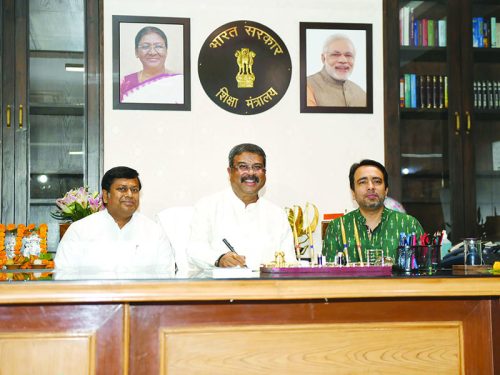
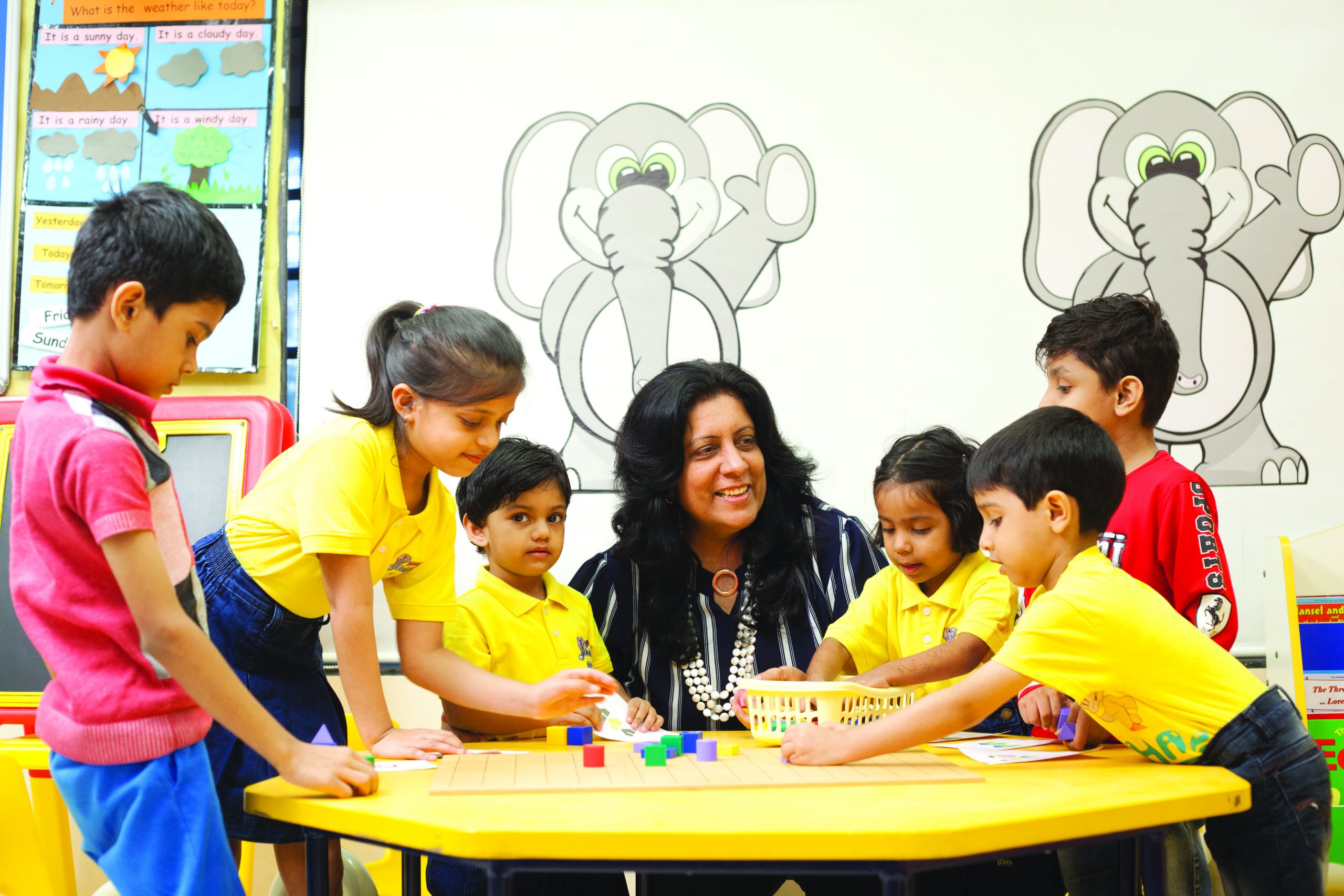
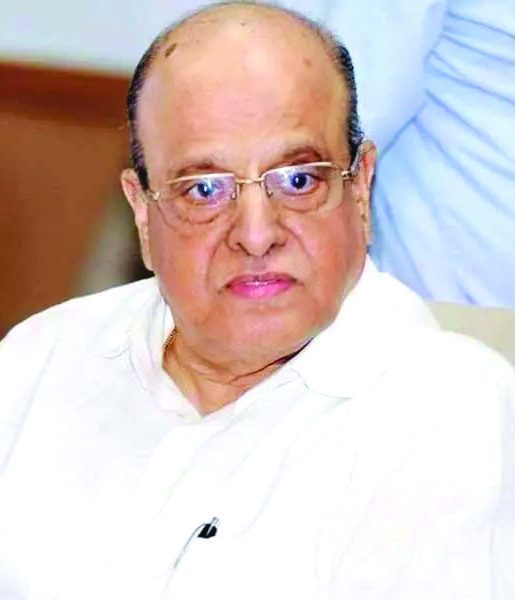
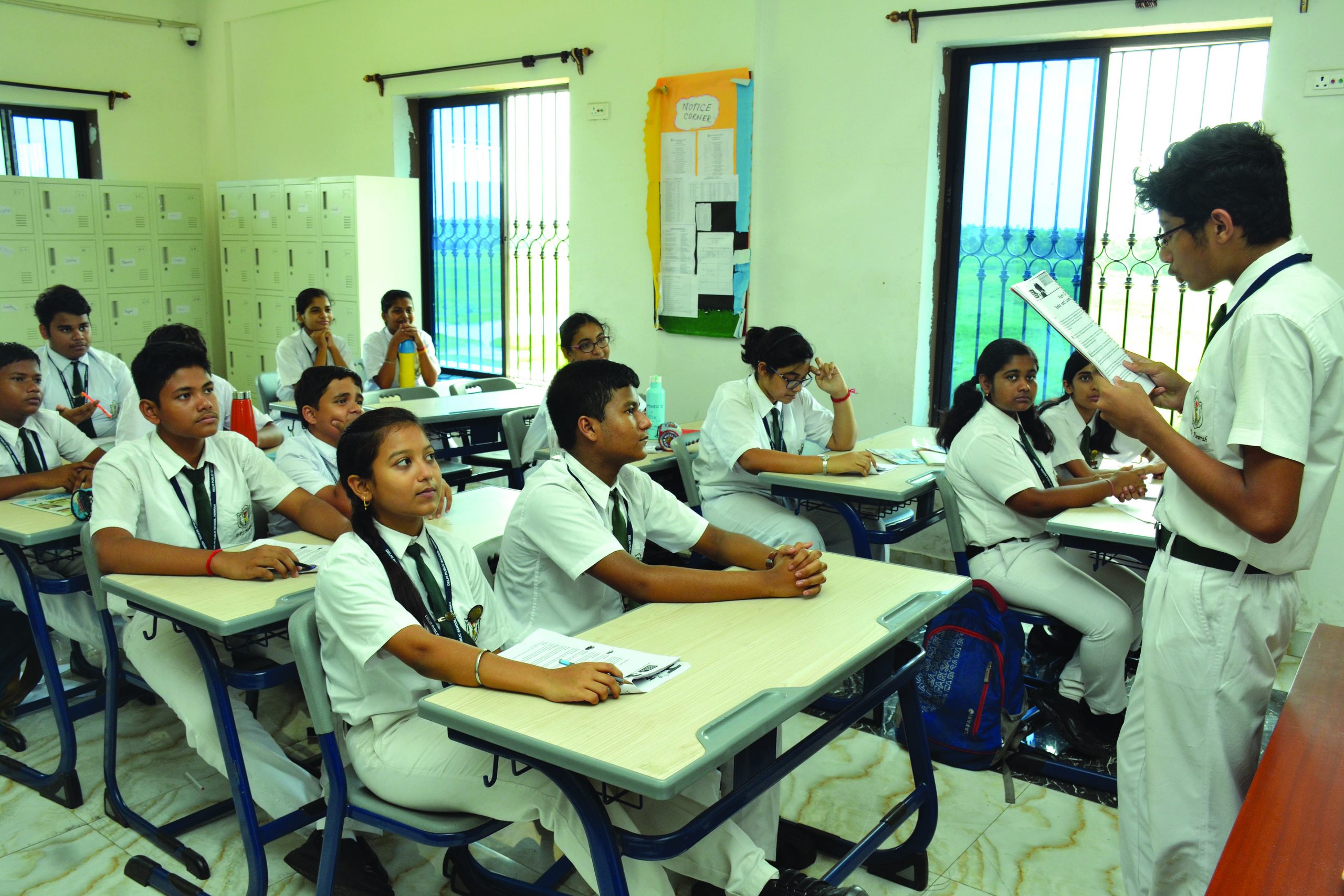
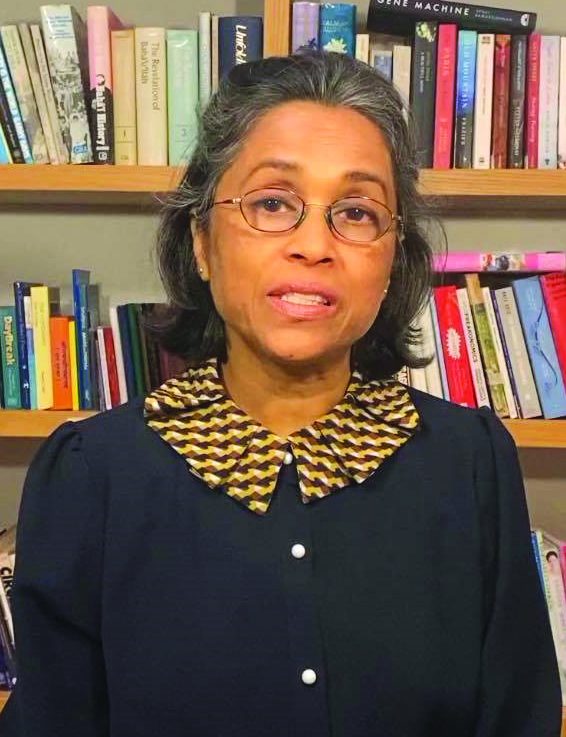
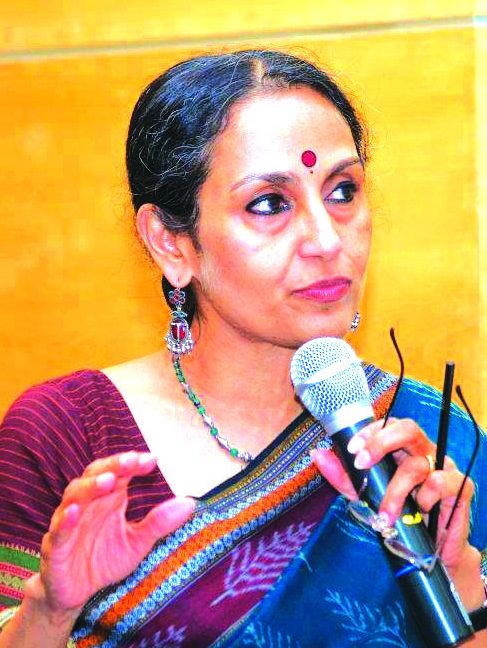
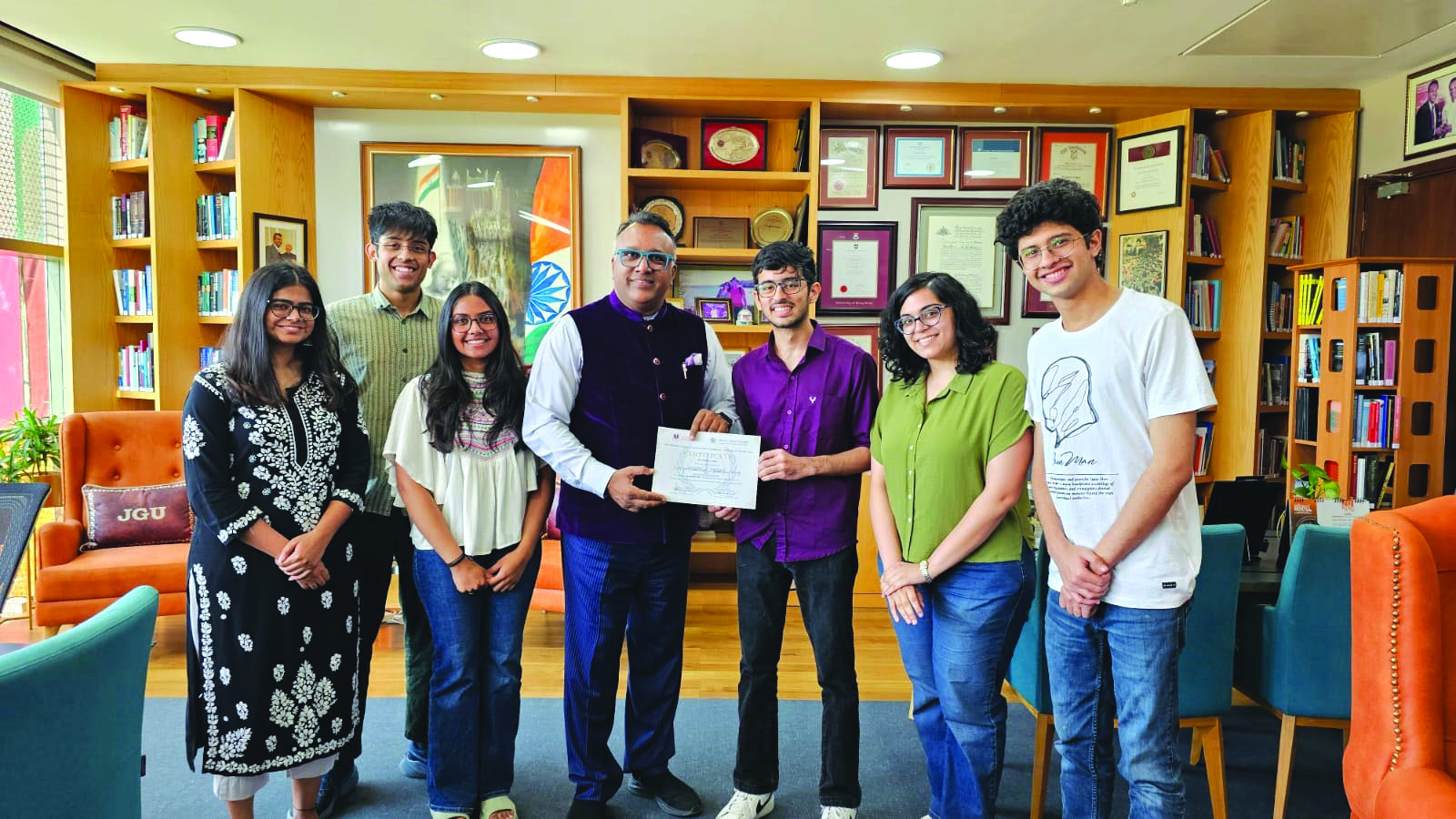


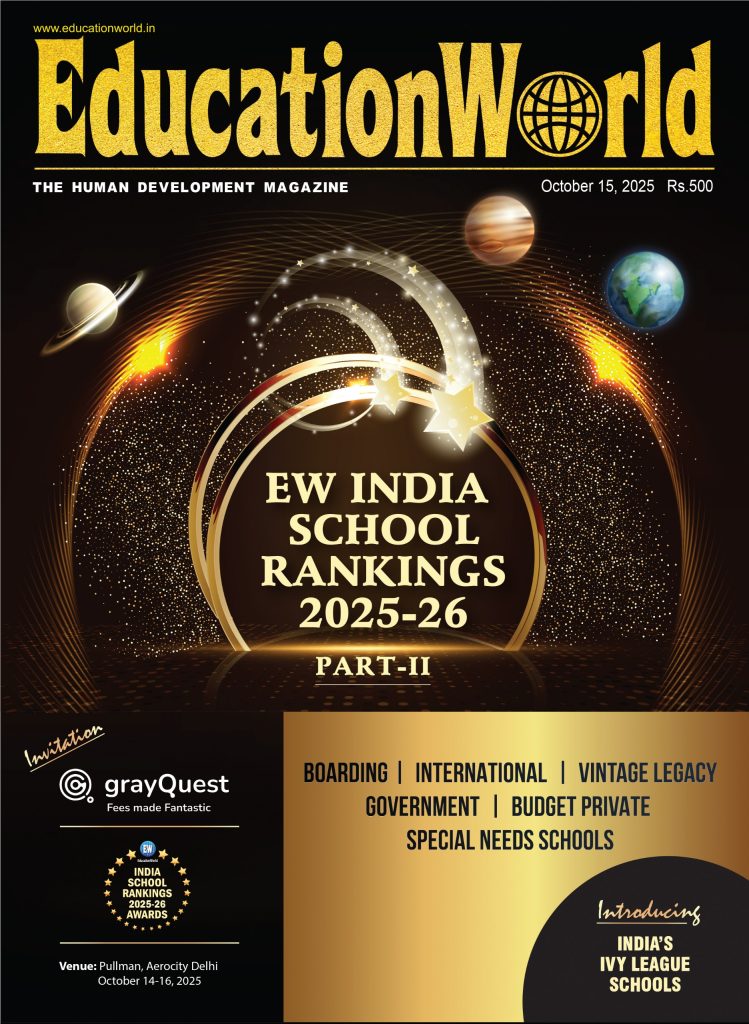








Add comment